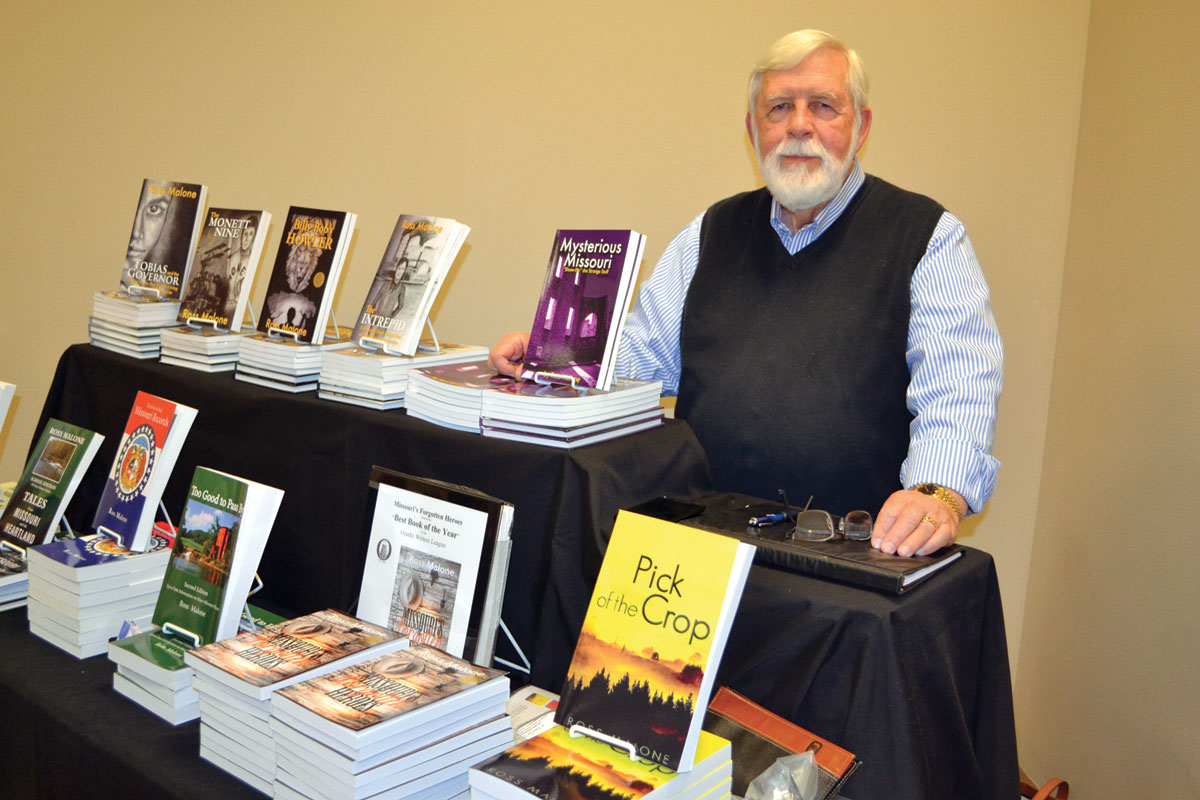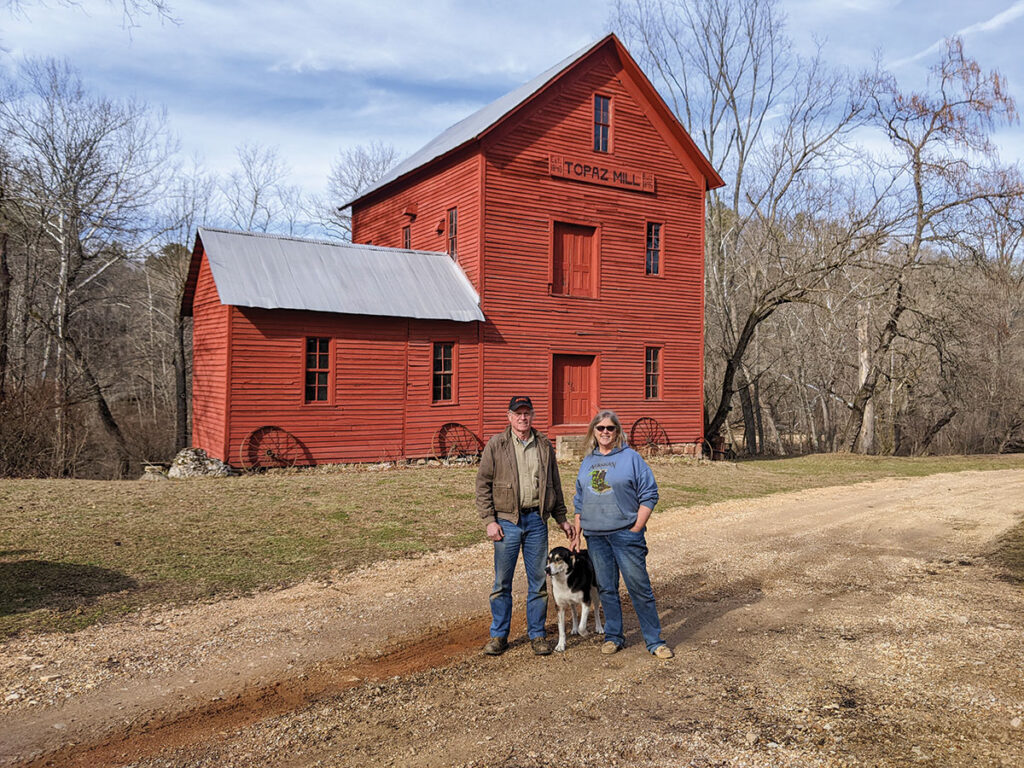
A once bustling Douglas County, Mo., community serves as a reminder of days gone by in the Ozarks
CABOOL, MO. – In the remnants of a small mill town called Topaz, history is alive and moving forward through the care and efforts of Joe Bob O’Neal and Betsy O’Neal.
The Topaz Mill and General Store, in Douglas County, Mo., are privately owned by Joe Bob’s aunt, Billie O’Neal.
Set back down a dirt road, 16 miles south of Cabool, Mo., Topaz was a thriving, little community at the time the store was built next to the mill in 1913. It was situated alongside the North Fork River on a 420-acre farm. It already had it’s own post office since 1893, which was later relocated inside the sizable store. Additionally, there used to be a barber shop, blacksmith shop, canning factory and distillery.
“They were looking for lead ore deposits on the prairie,” Joe Bob said of the first published accounts of the Missouri Ozarks by Henry Schoolcraft. He explored the area with Levi Pettibone. There was a map in the store that detailed their journey. Joe Bob was rich with history of the area and happy to share and recommend resources for further study. Of the Topaz area he said, “Supposedly, they discovered this spring in 1818.”
The first mill at Topaz was built in the 1840s due to its proximity to Topaz Spring. The original owners were Aaron Posey Freeman and his wife Alabeth Ball Freeman. Little else is known about that first mill. In 1890, R.S. Hutcheson bought the farm, built the current mill in 1895 and the store in 1913.
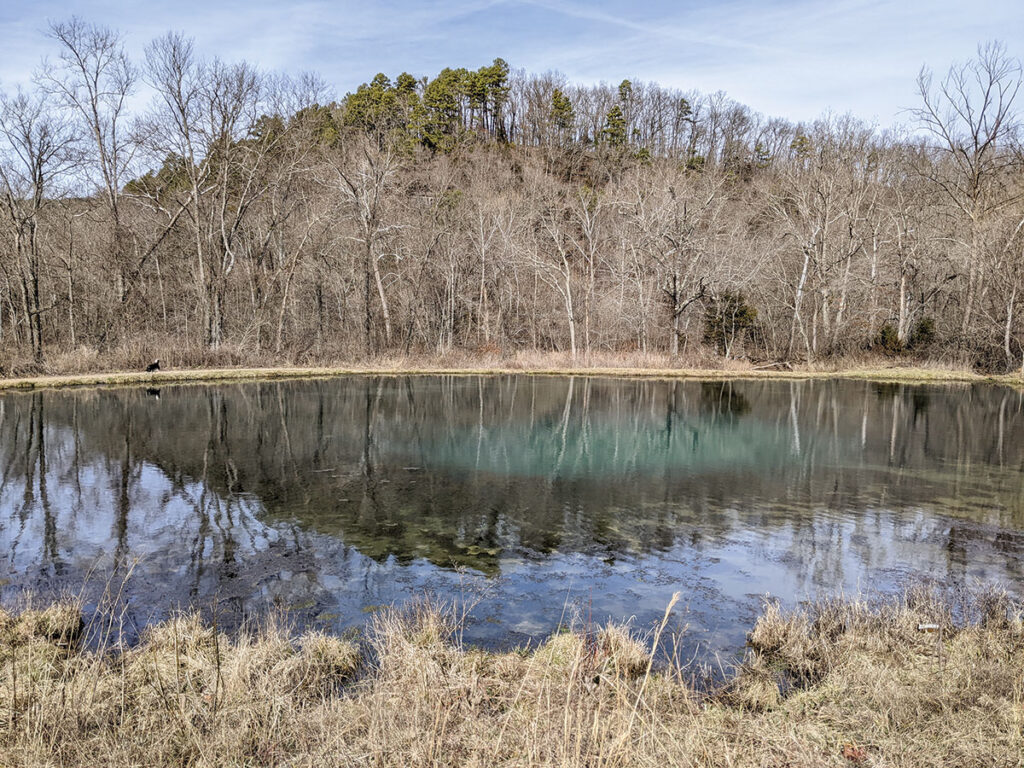
“‘You’ll never catch me spending one night in this place as long as I live,’” Billie, the current owner said, according to her nephew Joe Bob. It was her first sight of the place and the mill and store were in need of repair. She, her husband Joe O’Neal, and her in-laws, Clarence and Adith O’Neal took ownership of the farm from seeing it in a 1956 real estate ad in the Springfield newspaper, which is on display in the store. Much work went into repairing the buildings since the purchase. Betsy said of Joe Bob’s aunt, “Now she’s 90 and so glad that we live here, by her.”
Unlike most water driven mills, Topaz lacked the iconic water wheel. “This was always a turbine powered mill,” Joe Bob said, as he began a tour on the side of the mill. A concrete raceway built by Joe Bob’s uncle still stands. It replaced an original, wooden one. Independent of the nearby North Fork River, spring water rushed along the concrete raceway from the spring to the mill. Once water hit the paddles of the turbine, the shaft would turn and the mill would grind to life.
“This is a 8 to 10 million gallon a day spring,” Joe Bob said of the nearby Topaz Spring. It opens 13-feet deep, at the aqua-colored center of a close-by pond. To preserve the workings of the raceway, water was later diverted from the mill.
Being a third generation O’Neal at Topaz, Joe Bob was well versed in the milling process and about the equipment. When he opened the doors to the mill, it was like stepping back in time and seeing the elaborate system of steel roller mills, bolter, smutter, belts and chutes.
“It goes up and down nine times from the time it’s a grain of wheat until it’s refined flour,” explained Joe Bob; from the basement to the third floor and around again. The wheat was separated into bran from the outer husk, wheat germ, and the white, starchy endosperm. The germ goes in the shorts bin with a bit of bran and endosperm that didn’t get through the final process. A huge bin on the second floor held the refined flour. There was a chute on the first floor from where it fell into sacks that were weighed on industrial scales.
Since flour couldn’t be stored for long periods, the mill accepted and weighed the harvest of wheat that a customer brought in. They ground what was needed for the short term and weighed and gave a credit for the remaining wheat that they could later collect, as needed.
“You don’t have much time to grind grain by hand. It’s a real slow process,” said Joe Bob. Most of the custom fit equipment was from the Great Western Manufacturing Company, which has operated since 1858. They made and shipped the heavy equipment, along with a millwright, by train, from Leavenworth, Kansas to Mountain Grove, Mo. The passenger and load then made the 20-mile journey to Topaz in a time before trucks. Local carpenters collaborated on the installation.
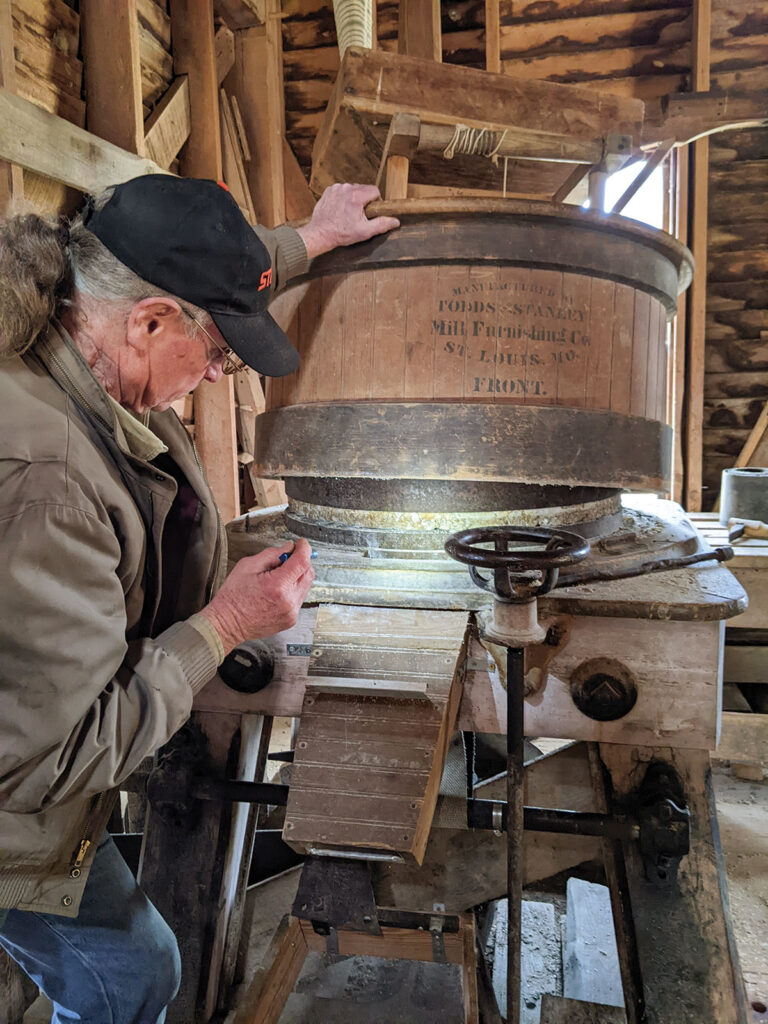
Grinding corn into cornmeal was a much simpler process, requiring the turbines to run at half the speed, whereas flour is run at full speed. Corn kernels went into the top of a grinder, between grindstones, came out the bottom and passed through a screen. The O’Neals make cornmeal a few times a year, but the flour grinding, which engaged equipment on all three floors is no longer operational.
“The mill is where people congregate. You can grow grain, but if you can’t grind it, you can’t use it to cook with,” Joe Bob said. As a necessary hub in a community, it made sense to have the store on site. They sold material, dry goods, tools, coffee and hardware among other necessities.
Betsy O’Neal gave a tour of the store, which is full of antiques from life there in the past. She gave histories of items and demonstrated how various toys and a foldaway bed functioned. Dishes, knickknacks, books used in the house, all lined old display shelves.
”When you went in the store, you had a list of what you wanted and you handed it to the storekeeper. They did your shopping for you,” explained Joe Bob. A walkway around the open second floor was used for storage. Antique wooden bins for bulk food set under a counter top.
Framed collections of Indian arrowheads found on the property and a collection of axe handles, Joe Bob’s uncle crafted, were on display. Other artifacts and photos show Topaz in it’s heyday, like one of the Topaz Ball Club, with 20 men pictured in it from 1910. Betsy posts her photos on the Friends of Topaz Mill Facebook page and sells prints in the store. She also drew a silhouette logo of the mill that was screen printed on items.
“A lot of people come in and sit down and play,” Betsy said of an antique piano at the center of the store. Over 350 guests have visited in the last year alone. As much as the O’Neals share the store’s history with visitors, many guests have come in and added to it with their own stories of Topaz or those of family members.
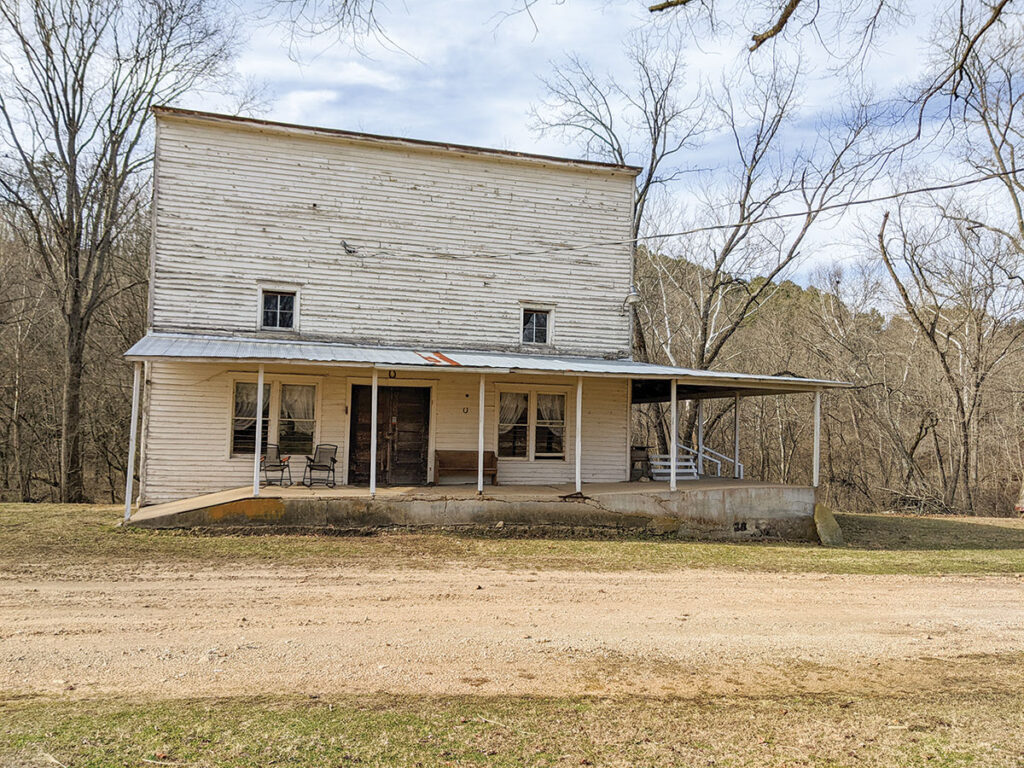
Some people like the setting so much that the O’Neal’s let them take engagement photos or host celebrations there, but they don’t cater or have a hall. Like a few lucky guests who were married at Topaz, Joe Bob and Betsy shared that honor, having had their own wedding there in 1981.
Topaz Mill is privately owned, but open to the public. While it is free, donations to the nonprofit Friends of Topaz Mill go toward the constant upkeep and repairs. For a tour with Joe Bob, Betsy and the friendly, canine host Addie, it is best to check ahead. Contact information and directions from Cabool are on the Friends of Topaz Mill Facebook page.






